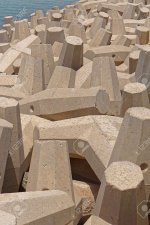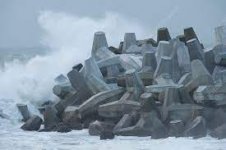Everything depends on density, higher is more less, lower is less, 30ppi is my norm. It's unmeasurable at 1kHz and at most -3 dB at 10 Khz. Not a game stopper for home use. Maybe for PA, but most of them sound so bad that it might not even matter.
Now I can report on my experience.
I have a crossover design with a 1R in series with a modified Beyma TPL-150 (according to this thread here on diyaudio). As you can see from the measurements I made towards the end fo the thread, the response is quite flat (and in fact not only on axis, even though I did not report those).
If I remove the 1R it there is no difference at 1Khz, I get one extra Db at 2Kz and about 3 from 10Khz to 20Khz. So filling the waveguide with foam should give me a flat response.
Indeed, I get a flat response from 1Khz to about 13Khz, then it starts dropping quite a bit and it goes down as much as 6Db at 20Khz. Add to this the fact that 20Khz is already a -3Db point, and you see that after 13Khz there is a significant drop.
The sound becomes slightly laid back, the precision of the scene is improved: these two differences are obvious but also very small (that waveguide is known to be quite good, not as good as an oblate spheroid, but still good). However, that unfathomable to describe sense air is now missing and I perceive as a result a kind of graininess. I understand that therefore EQ is unavoidable or I should use a super tweeter to compensate. I have nothing against EQ but at the moment I prefer to concentrate on other matters, and adding a super tweeter would reduce the sense of coherency given by a single source that I really like a lot. Since then I have returned to putting that 1R back and removed the foam. I am not in seek of perfection, rather of the highest result within a minimalist framework.
So my own experience confirms that the foam given au audible improvement but it cannot be used alone. EQ has been mentioned here and therefore it should not come as a surprise. My post just confirms what we know. Maybe if one day I buy those TakeT Batpro II super tweeters or I cannot sell my visaton TL 16H I can give it another try.
Or I will try another crazy idea. Since after 14khz the Beyma waveguide beams anyway, I could add a foam insert that has an empty slot in the middle...
I am not in seek of perfection, rather of the highest result within a minimalist framework.
Then I don't think that foam is for you.
Then I don't think that foam is for you.
Your reply is a bit dry, I hope I have not insulted you in any way. I think I praised your work — at least indirectly — by giving it another confirmation of the positive effects. I really like what I heard but it was (of course) incomplete (and not your fault).
I might try again with a supertweeter though.
I agree with ErnieM. The test would be better if you can test quickly between with it and without foam, with the exact same frq-response and same level.
Also think about that some of the ‘air’ around something like 9-13 KHz is not there on every recording. And some people prefer a positive notch in that region, depending on the level. Ie loudness curve.
Also think about that some of the ‘air’ around something like 9-13 KHz is not there on every recording. And some people prefer a positive notch in that region, depending on the level. Ie loudness curve.
Just for academic purposes....maybe you can try eq for a moment so you have a complete picture of the experiment.
Others are curious to the results. Thank you.
I agree with ErnieM. The test would be better if you can test quickly between with it and without foam, with the exact same frq-response and same level.
Also think about that some of the ‘air’ around something like 9-13 KHz is not there on every recording. And some people prefer a positive notch in that region, depending on the level. Ie loudness curve.
Guys, you are right. I'll see if I can do some more REW measurements tomorrow or anyway before the end of the week, create an EQ profile and re-listen.
It makes no sense to leave something only partially done.
Roberto
Your reply is a bit dry ...
Don't worry, I am not offended. Just wanted to point out that getting the foam right is tricky, so if it's not premier performance that you are after then it's probably not worth the effort.
Hello All,
Hey I am going to give this foam thing a try.
I have GRAS microphones and a AP analyzer to test with and without foam; impedance, distortion, impulse, distortion and FR.
Thanks DT
Added note: I see the foam functioning similar Dolos breaking up waves on the jetty.
Hey I am going to give this foam thing a try.
I have GRAS microphones and a AP analyzer to test with and without foam; impedance, distortion, impulse, distortion and FR.
Thanks DT
Added note: I see the foam functioning similar Dolos breaking up waves on the jetty.
Attachments
Last edited:
Just for academic purposes....maybe you can try eq for a moment so you have a complete picture of the experiment.
Others are curious to the results. Thank you.
in the end (I have made several experiments and measurements in the meantime) I did not need to EQ. I simply had to remove a series resistor in the xover *and* add my Vision TL16H as a super tweeter. You can see the result

No granulosity, just a hint of darkness (which I like). Quite flat and extended response. Scene a bit laid back (which I prefer to forward presentations). The result is sonically very natural, precise, almost movingly so.
I will now buy a 8cm thick piece of foam and try to cut it more precisely (I am using a 3cm thick foam and 3 layers).
Last edited:
Hi all, I just found this thread and am giving this a try on my Beveridge Electrostatics. I have to stuff the second one still, I'll let you know how it goes.
Not sure how you would stuff electrostatics with foam and why…
Not sure how you would stuff electrostatics with foam and why…
Beveridges have a sort of horn they called a lens. There's plenty of places to stuff foam. Which I obtained, and which gets me to the problem.
This is the exact stuff I ordered:
Speaker Grill Foam Filter | Foam Factory, Inc.
... but it seems lossier than is being talked about here. I measure about 5dB loss per inch of thickness at 10KHz. Does that sound similar to others here?
Thank you.
Ive used 30 ppi foam on alot of older planars with built in WGs and had some remarkable results, especially on the lower cost ones like the HiVi RT2H-A. They all seem to suffer from the same issue with FR peaks and ringing in the 7-10k area.
It also works well inside grille frames, reducing diffraction off the grille edges. JBL knew what they were doing on the older LE26 tweeters with that foam ring, although it does absorb some top end.
It also works well inside grille frames, reducing diffraction off the grille edges. JBL knew what they were doing on the older LE26 tweeters with that foam ring, although it does absorb some top end.
With my horn it's possible to fill the entire length of the cells; which is about 9 inches from inlet to outlet. When completely filled my loss at 10KHz was more than 30dB. No go.
I'll drop back to treating just the abrupt discontinuities. The cells are all smooth walled (it's actually some kind of cardboard soaked in resin) so I will empty them.
For the horn inlet and outlet, the correct location for foam is *at* and *after* the transition, correct? There's no benefit from foam 'upstream' of the transition?
Thanks.
I'll drop back to treating just the abrupt discontinuities. The cells are all smooth walled (it's actually some kind of cardboard soaked in resin) so I will empty them.
For the horn inlet and outlet, the correct location for foam is *at* and *after* the transition, correct? There's no benefit from foam 'upstream' of the transition?
Thanks.
The high attenuation levels are quite strange. To those that experience extreme attenuation: are you sure it is open cell foam? It should be foam for fish tanks, which is guaranteed to let water pass through and no pockets where it can stay and rot. Then, also air is nearly free to pass through. A key word is “reticulated”.
It is also true that you do not need to fill the waveguide completely: IIRC Earl’s patent speaks of “up to 80%”.
It is also true that you do not need to fill the waveguide completely: IIRC Earl’s patent speaks of “up to 80%”.
Beveridges have a sort of horn they called a lens. There's plenty of places to stuff foam. Which I obtained, and which gets me to the problem.
This is the exact stuff I ordered:
Speaker Grill Foam Filter | Foam Factory, Inc.
... but it seems lossier than is being talked about here. I measure about 5dB loss per inch of thickness at 10KHz. Does that sound similar to others here?
As long as you do not compress the foam, the attenuation should not be that bad. But if you take roughly cuboid pieces and stuff them until the throat of the cells, the part closest to the drivers will be more dense and cause excessive attenuation. Foam compression will close the pores, and in fact act as a cork!
Also, the effect varies a lot with the design of the cavities. If they are closer to waveguides, there are less reflections and therefore there won't be many HOMs (higher order modes) to dampen. But if they are designed to "bend" the sound wave intentionally in various directions, the system is supposed to have many reflections, and the foam will defeat the purpose of the system, apart from causing too much attenuation. You speak of "abrupt discontinuities" – which makes me think this is the case.
IIUC, one needs to fill a horn or a waveguide with already low-ish HOMs at least 80% with suitably shaped foam, and I would personally avoid getting too close to the membrane of the transducers themselves, leave an air gap.
Thanks. Like I said I got it from the same place in Michigan that's been discussed here.
Here's sweeps of a small Etymotic bookshelf speaker with zero, 2", and 4" of foam laid in front of it.
I cannot see the pictures. They do not load.
I cannot see the pictures. They do not load.
Sorry, they are Dropbox links, if you right click and open them in a new tab you can see them.
- Home
- Loudspeakers
- Multi-Way
- Question for Dr. Geddes about his WG foam plug




